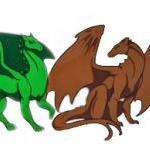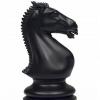
Note: While authors are asked to place warnings on their stories for some moderated content, everyone has different thresholds, and it is your responsibility as a reader to avoid stories or stop reading if something bothers you.
Dragonriders of Pern series was created by Ann McCaffrey in 1967 and spans 24+ books published by Ballantine Books, Atheneum Books, Bantam Books, and Del Rey Books. Any recognizable content in this story is from Ann McCaffrey, Todd McCaffrey, Gigi McCaffrey or their representatives or inheritors. <br> Original content provided by author of this FanFiction story without monetary compensation. <br>
The World of Pern - 5. Weyrs and Weyr Life
Weyrs and Weyr Life
Six Weyrs are spaced throughout the norther continent of Pern, each each covering its own area against Thread and receiving tithes from the Holds under its protection. They are Fort, Benden, High Reaches, Telgar, Ista and Igen. The Weyrs are situated well away from holds and are based in the craters of extinct volcanos.
Each Weyr has a configuration of stones known as Star Stones. These are aligned in such a way to allow for the prediction of the start of a Pass, which is confirmed when the Red Star is seen bracketed in the Eye Rock.
The Weyr is run by two people; the Weyrwoman, who rides a gold dragon and the Weyrleader, who rides a bronze. A man becomes Weyrleader when his dragon mates with the senior queen during a mating flight. As there are usually several gold dragons in a Weyr, the oldest is generally the senior, although a Weyrwoman retires once her dragon can no longer lay eggs. The next oldest, or sometimes the first to rise to mate, becomes the new Weyrwoman.
Each Weyr is autonomous, although the Weyrleaders and/or Weyrwomen often meet up to exchange ideas or views, or to discuss the best way to deal with Pern-wide problems.
Riders may be transferred between Weyrs, particularly if one becomes short of riders due to disease or deaths. Junior queens are often transferred so that a weyrwoman gains experience of running different Weyrs and to prevent too much interbreeding of dragons. Riders sometimes form romantic attachments with each other or with support workers within the Weyr. If a pair decide to stay together they are known as weyrmates.
Dragons, like fire lizards, are hierarchical creatures. At the top of the social structure are the gold dragons, who can command any other colour. Next come the bronzes, followed, in order by brown, blue and finally, green. The status of a rider within the Weyr is very much conditional on the colour of the dragon they Impress (hence the reason most boys dream of Impressing bronzes). However, given that bronze dragons only make up around 5% of Weyr's dragon population, this is an unrealistic expectation for most.
Brown dragon riders have good prospects for promotion. They can become Wingseconds or in some cases, during a Pass, even Wingleaders. Brown dragons make up about 15% of a Weyr's population.
Blue dragons are the 'workhorses' of a Wing. They are smaller in size than browns, making them nimble and quick in the air, but they have greater stamina than the greens. They make up about 30% of the population.
Green dragons are the smallest and most agile, however, they are unable to fly a full length Fall. This means a Wing needs sufficient green dragons to be able to use them in shifts. Green is the most common dragon colour, making up around 50% of the population.
A Weyr Bowl contains all of the living accommodation for dragons, riders and their support staff. In the oldest Weyrs such as Fort and Benden, many of the tunnels and caverns were carved out or enlarged using stone-cutting machinery which left perfectly smooth walls. Later Weyrs, such as Telgar, were mostly worked by hand, leading to a rougher finish.
Dragons live in their own individual weyrs, hollowed out in the caldera walls. A weyr contains a ledge, large enough for the dragons to land safely and where they can sunbathe, a heated couch where the dragon sleeps and an inner room which serves as the riders quarters. Most weyrs are inaccessible except from the air, although some of those nearest to the Bowl floor have steps leading to them.
Weyrs for Wingleaders, Queens and the Weyrleader and Weyrwoman often have additional luxuries such as their own private bathing pool and a service shaft, allowing food and refreshments to be sent up from the kitchens.
There are communal areas where riders and weyrfolk can eat and relax, including a dining hall and large heated bathing pools.
There will be sufficient open ground for Wings to form up, land and take off, pens for livestock and the feeding ground where dragons hunt and catch their prey. There is always a lake, both for watering the livestock and where dragons (and people, when it's warm enough) can enjoy a swim.
Every Weyr contains a Hatching Ground, where the queen lays her eggs. The sands are heated from below to the optimum temperature for the eggs and there are tiered stands all around where dragons and spectators can gather to watch the young dragons hatch.
Apart from dragonriders, any Weyr has a large number of support staff, who clean, cook, mend and wash clothes, and maintain all of the Weyr's equipment. In charge of all the Lower Cavern staff is a Headwoman, who reports directly to the Weyrwoman. There will usually be staff to look after the livestock, and healers to treat the various illnesses and injuries. The Weyr may also have their own harper to provide education for the children and music for entertainment. Another important job is Weyrlingmaster - a dragonrider who has the task of training the weyrlings so that they are ready to join a Wing once they and their dragons have the required degree of experience and knowledge.
There are always lots of children growing up in the Weyr. Dragonriders don't raise their own offspring (and there are no real family units anyway) so children are fostered to the most motherly Lower Cavern women, who may also have children of their own. Most of the boys will end up as candidates and if they Impress, as dragonriders themselves one day. While growing up in the Weyr, they are encouraged to learn a trade. Then, if they don't Impress, they may choose to pursue this career either in the Weyr, or outside, in a Hold or Crafthall.
Because a dragonrider's purpose is to care for their dragon and to fight Thread during a Pass, they don't have the time to farm or grow food. In exchange for the protection they provide, Holds provide them with goods, food and livestock (known as a tithe).
During an Interval, dragonriders generally live longer than the rest of the population on Pern; they do a lot less hard physical labour and generally eat better than the average Holder. During a Pass, it's very different. It's an accepted fact of Weyr life that no matter how much training someone has, the only way they can really learn how to fight Thread is to actually do it. Your first mistake might be your last. The first few Turns as a wing rider are the most dangerous; if you survive those there is a good chance experience will keep you safe a lot longer.
-
 15
15
-
 3
3
Note: While authors are asked to place warnings on their stories for some moderated content, everyone has different thresholds, and it is your responsibility as a reader to avoid stories or stop reading if something bothers you.
Dragonriders of Pern series was created by Ann McCaffrey in 1967 and spans 24+ books published by Ballantine Books, Atheneum Books, Bantam Books, and Del Rey Books. Any recognizable content in this story is from Ann McCaffrey, Todd McCaffrey, Gigi McCaffrey or their representatives or inheritors. <br> Original content provided by author of this FanFiction story without monetary compensation. <br>
Story Discussion Topic
-
-
-
- 21 replies
Recommended Comments
Chapter Comments
-
Newsletter
Sign UpSign Up and get an occasional Newsletter. Fill out your profile with favorite genres and say yes to genre news to get the monthly update for your favorite genres.





